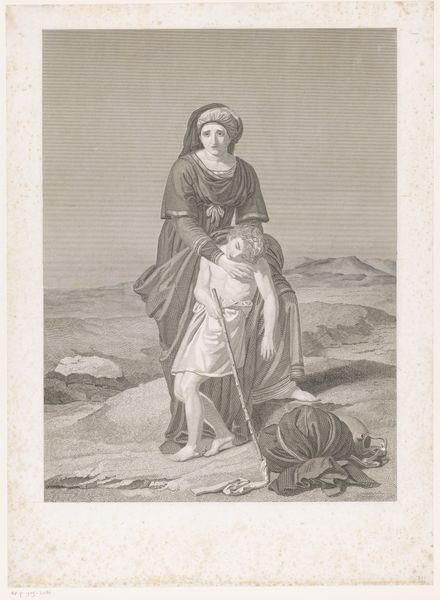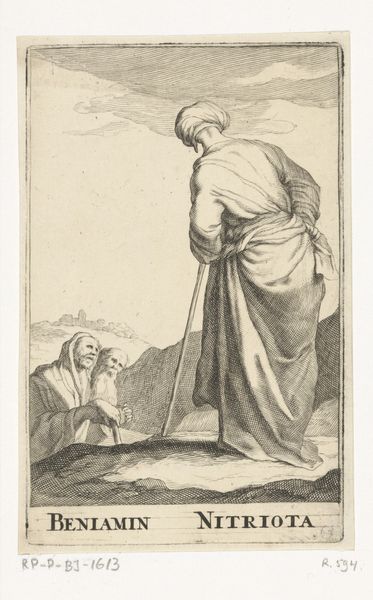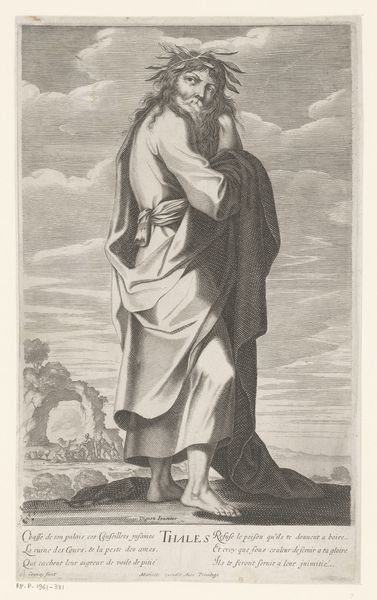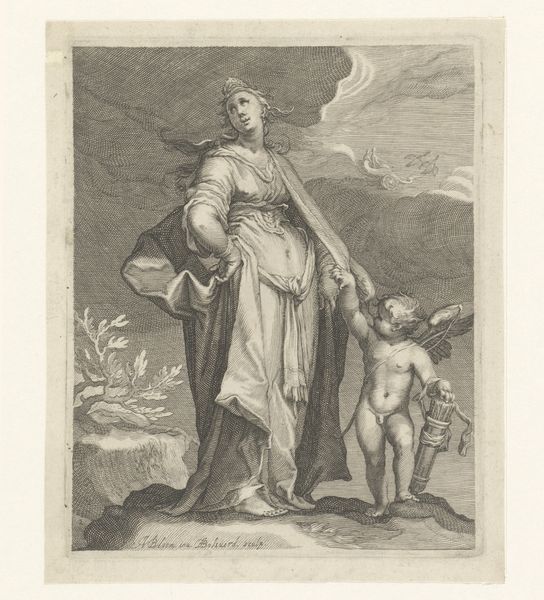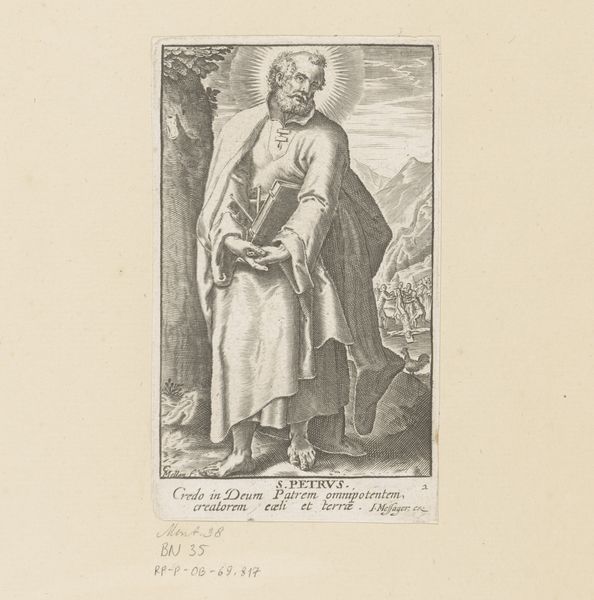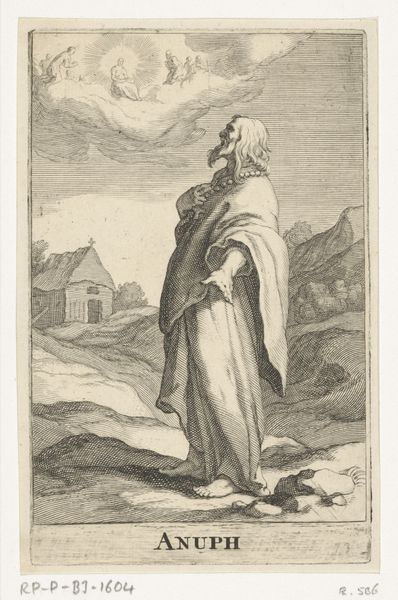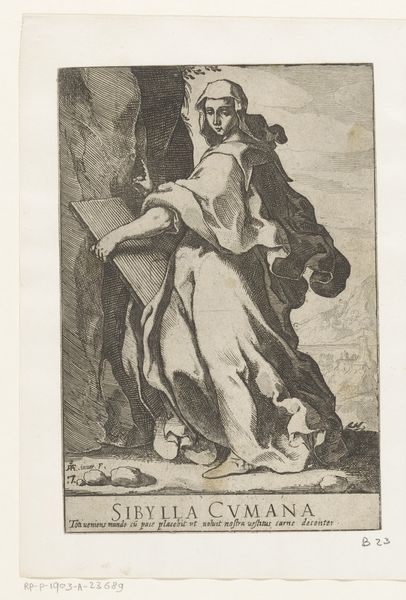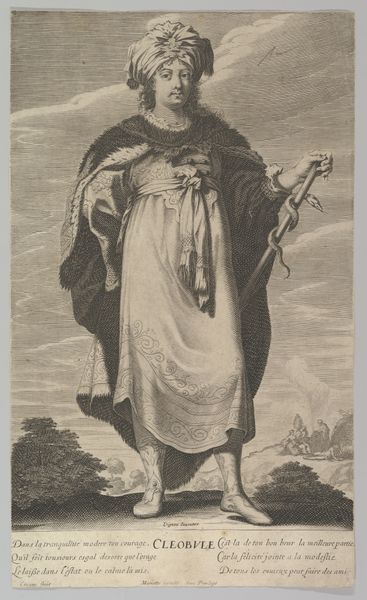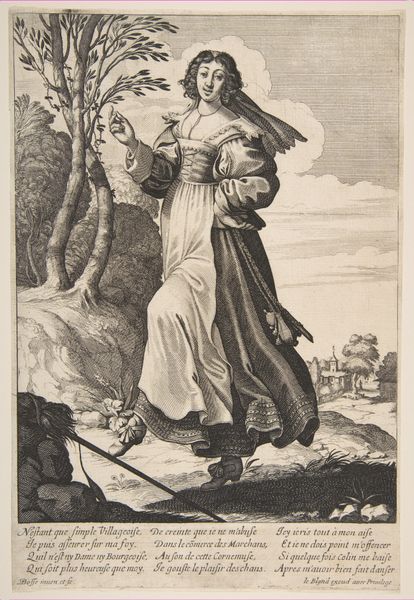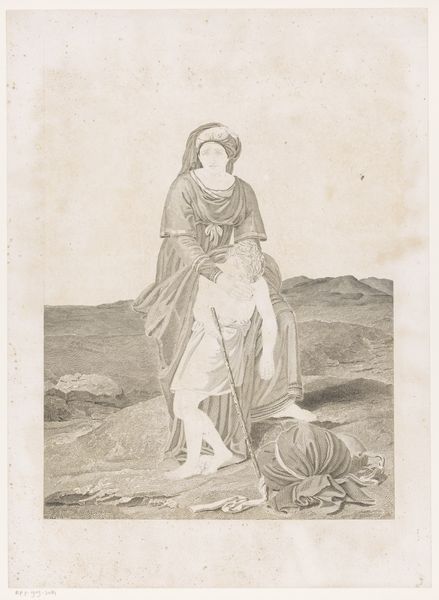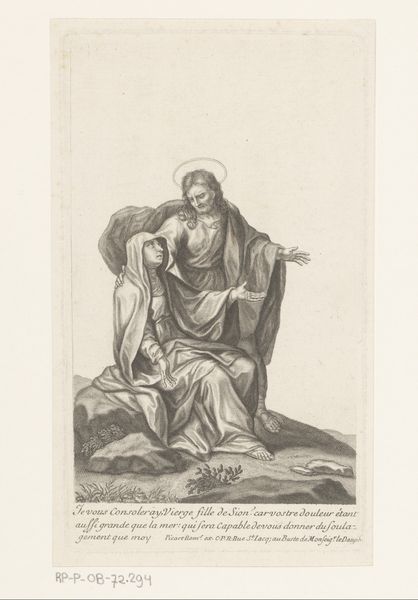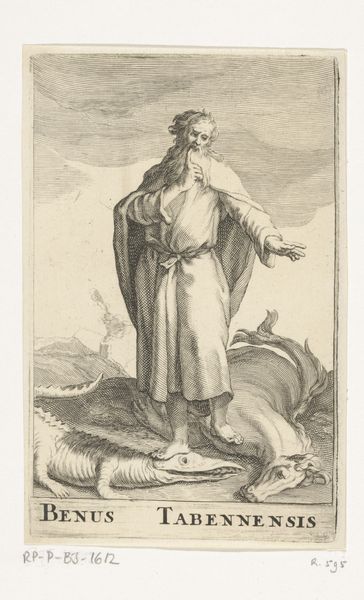
print, engraving
#
aged paper
#
light pencil work
#
narrative-art
# print
#
landscape
#
figuration
#
historical photography
#
romanticism
#
chiaroscuro
#
history-painting
#
engraving
Dimensions: height 544 mm, width 396 mm
Copyright: Rijks Museum: Open Domain
Editor: This is "Hagar and Ishmael in the Desert," an engraving from sometime between 1815 and 1862. The figures stand out so starkly against the desolate landscape. What strikes you about it? Curator: The emotional weight hangs heavy here. The engraving captures a moment of profound crisis, steeped in visual symbolism. Hagar, shielding Ishmael, embodies maternal desperation and divine abandonment. The desert itself… what does it tell you? Editor: A place of isolation, maybe punishment? It definitely emphasizes their vulnerability. Curator: Precisely. But consider also the visual language of Romanticism here. Think about the visual symbolism, which often used light and shadow to depict drama. Does that offer an alternative layer to this narrative? Editor: Definitely, the dramatic contrast almost splits the image in two. Curator: Note the garments, too. Classical draping wasn’t an accident; it speaks to timeless suffering and perhaps also to societal perceptions of Hagar as an outcast figure, someone set apart from the more typical imagery. Editor: I see what you mean! So it’s not just a biblical scene but a commentary on otherness and exile? Curator: Precisely! Art can sometimes reflect collective cultural memory and how particular types of symbols and representations have been used and transformed across time. What do you think you'll take away from viewing this artwork today? Editor: I’ll remember to consider the symbols and historical references woven into the image itself. Thanks!
Comments
No comments
Be the first to comment and join the conversation on the ultimate creative platform.
